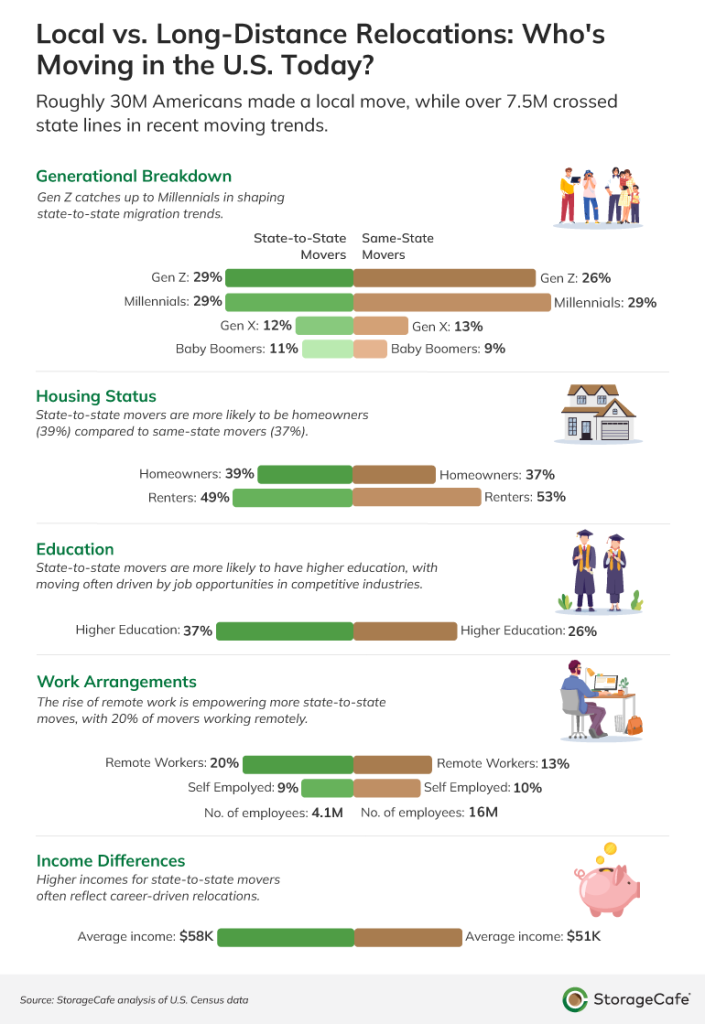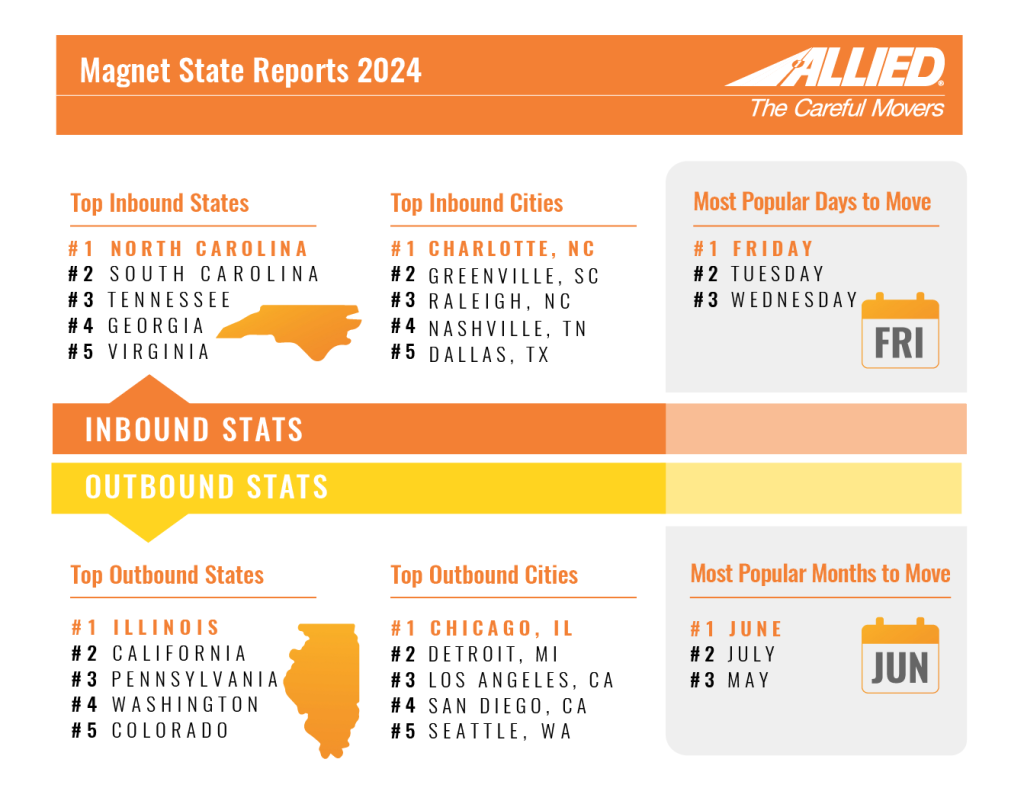The United States is a nation that was built upon the concept of movement and reinvention.
In 2025 fewer and fewer people are relocating within their area than ever before. Is trading up a thing of the past? Today’s new movers seem to be driven by necessity. They’re going longer distances, over state lines, in pursuit of a better (and perhaps more affordable) life for themselves and their families.
According to the latest U.S. Census data, Americans are moving less frequently than they used to, with a staggering 87.9% of the population staying in the same home year after year — a notable rise from the 85.1% reported a decade ago.
Let’s explore some fascinating shifts in population, because while this country’s overall growth rate has been steady, the underlying migration trends may surprise you.
Local vs. Long Distance Moves
Local moves are often non-essential and motivated by a desire for an upgrade in lifestyle.
Think about a first-time homeowner who is now married and starting their family. They may be looking for a new home that suits their change in lifestyle (while not really looking for a change in location). Usually, these moves are to a more prestigious neighborhood or into a larger home. These types of moves are currently at a historic low.
On the contrary, long-distance migrations are usually driven by a need to move. This could be because of a job, being able to afford a home, or wanting an improved quality of life. Surprisingly, rising living costs have hardly affected state-to-state moves, ensuring that these moves continue at a steady pace.
The difference between local and long-distance moving is more than just the number of miles, – there is a distinction between the cost, timeline, and services required for your move. As far as the physical moving process is concerned, local moves are generally less complex and can often be handled with the help of friends and family, or by renting a truck. On the other hand, relocation across state lines requires a lot of planning, professional moving services, and many other logistics.

(Source)
1. Americans are Staying Put
There are many reasons that people have for not moving, but one of the biggest is the persistently high mortgage rates we have seen over the past few years. If you locked in a house pre-pandemic, at a low rate, it is hard to justify letting that go.
As someone who has moved a bunch over the past six years, the overall cost of moving itself is a significant reason not to move. It is more expensive than ever! We can thank higher gas prices, labor shortages, and supply chain issues for that.
Local moves now typically cost between $400 and $1,000, while cross-country moves for a two- to three-bedroom home can range from $8,000 to $11,000, according to United Van Lines.
It all comes down to how big the draw for a new opportunity, or better lifestyle is. For some, the move is worth the price to get there.
2. Southern Migration
In 2025, the south remains the fastest-growing region, attracting Americans from all over the country.
This year’s PODS long-distance moving data reveals that movers are swapping out previously hot move-to markets like Florida and Texas for spots in Tennessee, the Carolinas, and Georgia. More than 60% of movers were to these southern states, with the Carolinas accounting for a whopping 30%.
I moved to SWFL (from Upstate NY) primarily to escape the snowy winters. But the southern appeal comes from more than just its warmer climate and sun-filled days, it also boasts a more affordable housing market, lower tax burdens, and consistent job opportunities (including popular industries like tech and healthcare).
It is hard to ignore these factors when you’re looking for the best place to raise your family.
While most people who move to a different state are renters (49%), roughly 39% of those who moved to a different state in 2023 bought a home within their first year of settling in.
This speaks volumes to the significant role that affordable housing options play in someone’s decision to relocate, and that these new movers are in search of a new age “American dream.”

(source)
3. A Renewed Interest in Rural Living
Another surprising, or maybe not so surprising), trend is the movement toward living in rural areas.
After a decade of decline, rural populations are on the rise again. A shift that is likely due to the rise of remote work, which has allowed people to live wherever they choose. These people are no longer tied to urban and suburban areas to be close to their jobs. This newfound flexibility is also being met with the trending desire for a quieter lifestyle, cue the sour dough bread makers and free-range chicken parents.
I must admit, having been a suburban boutique owner in my early thirties, and before that a buyer in NYC in my twenties… I am currently trying to move my family to a 3-acre agricultural zone property in my late thirties!
You could say that rural America is making its comeback. Call it nostalgic, but many people are being drawn to the wide-open spaces, slower pace, and sense of community.
Data-Driven Decisions are The Key to Success
Data is more valuable than ever when it comes to new movers and their migration patterns. Your business needs access to reliable mover data in order to identify and reach the people who are moving to the areas you serve.
It is important that you understand your target audience, by leveraging demographics and psychographics. When you include mover data in your marketing arsenal, your business can:
- Focus marketing efforts on areas with an influx of new movers.
- Personalize your messaging and offers to the specific needs and interests of these new residents.
- Connect with new customers by reaching individuals and families who have recently relocated to your area.
- Stay ahead of your competition by understanding migration patterns and adapting your marketing strategy accordingly.
Conclusion
The U.S. migration landscape is dynamic, and its current movements can present you with some amazing opportunities for your business if you embrace them.
Make the most of current new mover trends by staying informed and utilizing data and personalization in your marketing strategy.
Position yourself for success by connecting with your customers right where they are, both geographically and demographically.




